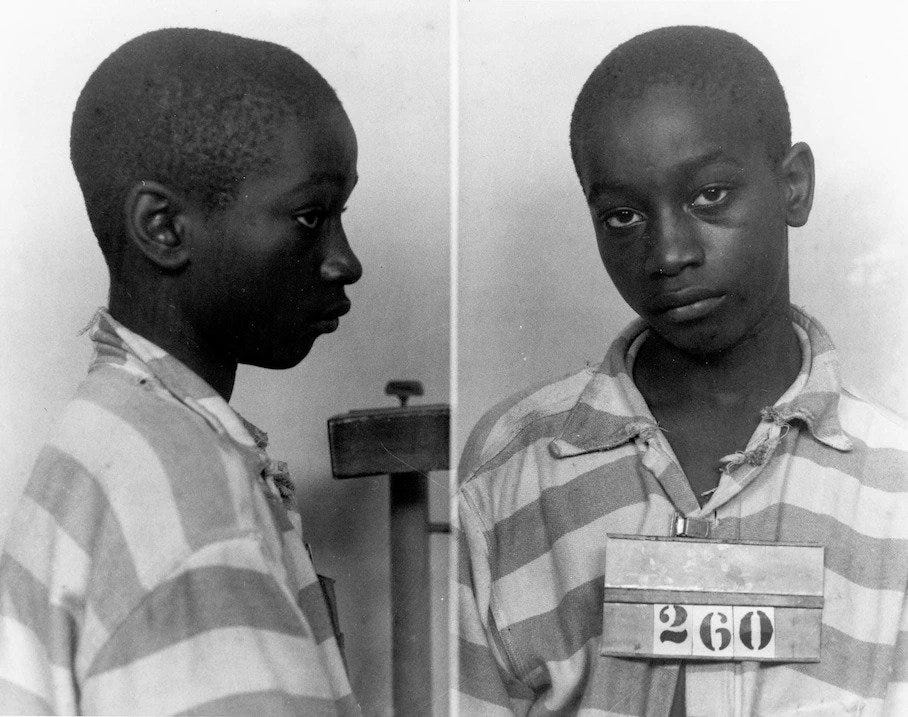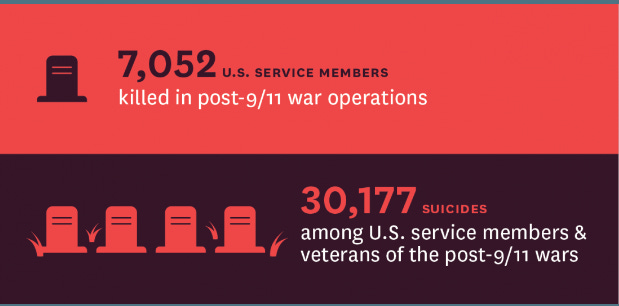Bullhorns and Bullets
As a supporter of the right to bear arms, I've struggled with the responses to horrific violence from those who are supposedly on "my side" of this issue. This is my bleeding-heart libertarian take.
It’s a week in America, which means there have been a non-zero number of tragic and violent attacks with guns. I know I am far from alone in feeling completely deflated every time a new headline hits or #MassShooting is trending on Twitter.
However, I sometimes do feel alone in my political circles when this particular issue is raised. I’m a libertarian, proudly. I believe that most of the problems we face in society (gun violence included, as I will get into) are made worse and fail to be solved because of government interference and incompetence. Since 2019 my career has been focused on communicating classical liberal principles, often to those who strongly prefer authoritarianism, be that flavored left or right. The first long-form piece I wrote was about the importance of protecting the right to bear arms as the protests in Hong Kong played out on the news. My heart ached as I watched young people take to the streets and cry out against decisions made before they were born that are now dictating their destinies. I believed then as I do now that we must never accept or support policies that will leave future Americans unable to defend themselves or determine their own futures because we were focused on an immediate fix regardless of long-term consequences.

That said, it’s been a while since I have heard a fellow libertarian make this or other arguments for protecting the Second Amendment that are, in my opinion, strong and convincing. In fact, the opposite has been true. The tweets and podcasts and articles and sound clips from self-professed libertarians after yet another shooting spree have been so often weak and unconvincing that I’ve found myself yelling common arguments for gun control back at my TV or phone. The straw manning that happens between the political left and right regarding opinions on gun control is nothing new, and libertarians should know that doing the same thing will solve nothing.
Like any American with a soul to speak of, I am desperate to see an end to the gun violence that all honest people know is far too prevalent in this country. Since that isn’t going to happen by thoughts and prayers or by painting all gun owners as heartless shills for the NRA, I propose we abandon both of those useless exercises and try to approach this problem with honesty and empathy and, the thing that lacks most in our current political discourse, nuance.
There are facts that need to be understood to have this conversation as fully and meaningfully as we as a society need to do. I would strongly recommend you read the research published by the Pew Research Center or a similar source that does not tell you how you should feel about the data. Just read it and sit with it for a while. Don’t trust a source that only wants to focus on one data point. It’s true that more Americans died of gun-related injuries in 2021 than in any other year on record. It’s also true however that on a per capita basis, there were 14.6 gun deaths per 100,000 people in 2021 which is below the peak of 16.3 gun deaths per 100,000 people in 1974.
Lest you think that I am trying to make these statistics seem acceptable, I assure you I am not. It’s also true that gun deaths among children and teens rose 50% in just two years (from 1,732 in 2019 to 2,590 in 2021). I promise that an honest look at these facts even by a hardcore Republican and gun enthusiast will not leave one convinced that there is no problem here.
Now, some hard truths from a different angle. “According to the CDC, 1 in 4 women and 1 in 7 men will experience physical violence by their intimate partner at some point during their lifetimes. About 1 in 3 women and nearly 1 in 6 men experience some form of sexual violence during their lifetimes. . . with intimate partner violence occurring in over 10 million people each year. . . Approximately 1.5 million intimate partner female rapes and physical assaults are perpetrated annually, and approximately 800,000 male assaults occur. . . Domestic violence affects approximately 325,000 pregnant women each year.”
Reading those statistics, I can’t help but think of Hilary Crowder whose own experience with (at least) mental and emotional abuse inspired my first entry here. We don’t know what physical abuse if any happened in the Crowder home, but we know that hundreds of thousands of pregnant women do experience violence from their partner.
Should those women be able to protect themselves and their unborn children? What about the mamas with young children who are also being victimized? What about the men who are victims (and are statistically even less likely to seek help after abuse)? A positive trend that shouldn’t be overlooked is that the occurrence of intimate partner violence is declining. We still know, however, that it happens far too often.
Certainly, not all of these incidents require a firearm for the victim to be able to escape to safety—but plenty do. Proposed gun control legislation so often does not seem to consider these people. This is the case with most legislation that one political extreme thinks is an easy fix for their pet issue. Republicans are still seeking to further restrict access to abortion, despite every public opinion poll saying this is a losing position, however, what isn’t talked about much is that the same people who are likely to suffer from anti-abortion legislation are the ones who will also suffer from gun control legislation: the poor, marginalized, and unconnected.
Despite what any holier-than-thou politician says on your TV screen, their wives, daughters, and mistresses will still always have access to whatever reproductive healthcare they desire. You don’t have to take my word for this as it’s already been proven time and again. Tim Murphy, the pro-life Republican and former representative from Pennsylvania resigned in 2017 after it was revealed he had urged his mistress to get an abortion. Republican mega-donor and former RNC deputy finance chairman, Elliot Broidy paid $1.6 million to a Playboy Playmate he had an affair with after she had an abortion. (Broidy would go on to plead guilty in a foreign lobbying case and soon after was pardoned by then President Donald Trump who just this week was found liable by a jury of sexual abuse and defamation.) According to testimony during his divorce trial, Scott DesJarlais, amazingly still a Tennessee congressman, supported his ex-wife's decision to get two abortions before their marriage. DesJarlais, a former doctor, also pressured a 24-year-old patient he was having an affair with to get an abortion—a conversation he recorded. Even after all that came out DesJarlais still votes for anti-abortion bills and claims a “100% pro-life voting record.” Perhaps most recently, former football star and failed Georgia senate candidate Herschel Walker, who had admitted to multiple affairs resulting in children he had no part in raising, was faced with accusations and receipts from a former partner showing he paid for her to obtain an abortion. Not long after a second woman came forward with a similar story of Walker driving her to a clinic after she had backed out when she went alone.
I’m stopping here because this article is not about Republicans pretending to be pro-life until they need to cover up an indiscretion, but I most certainly could continue. Feel free to venture down that hypocritical rabbit hole yourself.
My point is that the wealthy and well-connected are always going to have what they need, be that privacy in medical decisions or access to options for self-defense. The stories you won’t hear about will be the mother who has a violent and unpredictable partner but can’t get a firearm to defend herself and her children because a law requires her to complete hours of gun safety courses that she cannot afford to take off work to attend. You won’t hear about the young man who wants to keep his family safe from the gang violence that plagues the only place they can afford to live, but when it’s found out he broke a new law that requires a firearm license he can’t afford, he goes to jail and his children spend years without their dad.
These are hypotheticals, but scenarios just like this and far, far worse are going to be reality if we don’t go think about them before passing laws that will make us feel like we at least did something. I’m more than sympathetic of the desire to make any kind of a difference in gun violence, but let’s not sacrifice those who will come after us in an attempt to quiet our conscience today. Let’s be thoughtful and careful.
Despite my hesitation in supporting new laws, I am far from the belief that there is nothing we can do. I believe a cause we need to acknowledge and tackle is the very thing I began this piece with: the government.
In all but the truly extreme cases, violence is learned behavior. The same domestic violence research I shared earlier also shows that 80 to 90 percent of domestic violence victims abuse or neglect their children. That is a breathtaking statistic in a sea of depressing findings. This is not the first time, but a 2021 study from the Society for Research in Child Development with data spanning 50 years found that “spanking alters children’s brain response in ways similar to severe maltreatment and increases perception of threats.” Consistent with previous studies, researchers found that children who are spanked are more likely to develop anxiety and depression disorders.
What’s the only thing other than “thoughts and prayers” you are likely to hear from a right-wing policymaker after a horrific shooting? “It’s not a gun problem—it’s a mental health problem.” I don’t disagree, so can we talk about where those mental health problems come from?
I remember a time I watched a mother holding her 1-year-old while a family member was tickling and playing with the child. The little boy got a bit too excited and hit his playmate in the face with his little hand. In less time than it would have taken to see that no harm was done, the mother smacked the toddler’s bare thigh and sternly told him, “We don’t hit.”
The irony about knocked me over. All I could think was that the lesson learned by that little boy was that we in fact do hit, and that is how we communicate and get people to do what we want.
Expand this story to encompass a massive authoritarian state and approximately 330 million people, and we’re getting closer to what I think our problem is now. If there is anything that a liberal-minded person should understand it is that the government really has only one card to play: violence. My fellow libertarians and I often challenge people to consider if they are willing to have government violence used to enforce a law they support—because that is what will happen. Forget violent movies and video games, in America we are exposed to pure and unadulterated violence at the hand of our government on a daily basis. Any law that is broken can result in government violence, whether you assault someone or have a tail light out, whether you steal or are suspected of using drugs. Hell, forget actually committing a crime, we are all far too familiar with innocent people being killed by police who are very likely to never be held accountable.
Our government still holds the barbaric view that they have the right to put citizens to death. We know that at least 190 people who have been sentenced to death have been found to be wrongly convicted and were exonerated—unfortunately, not all of them received said exoneration before they were wrongfully killed by the state.

And then there is American war culture. Before I was old enough to begin to understand the affects of endless war, I was convinced that America was always in the right when we used aggression against other people. This is the double standard Americans come to accept. When other countries commit acts of war they are terrorists or barbarians. When we do it, we are saviors. I’ve been on this earth for 32 years and America has not been a nation at peace for a single moment of my life. Military propaganda is everywhere; sporting events, graduations, state fairs. Why is this a problem?
“In 2022, approximately 76 percent of U.S. veteran and active service survey respondents stated they have experienced post-traumatic stress disorder (PTSD) as a result of their military service.” However, most official statistics of PTSD diagnoses among veterans is between 7 and 20 percent, meaning a staggering number of them are not seeking out assistance or treatment (or have sought it out unsuccessfully). The study finds that at least four times as many active duty personnel and war veterans of post-9/11 conflicts have died of suicide than in combat, as an estimated 30,177 have died by suicide as compared with the 7,057 killed in post-9/11 war operations. A report from Brown University found the increasing rates of suicide for both veterans and active duty personnel are outpacing those of the general population. The statistics surrounding suicide in the military are so well known that you can frequently see #22ADay trending on social media, in conversations about the estimated 22 veterans and active duty military personnel who die by suicide every day (various studies find this number is closer to 16 a day on the low end and 40 a day on the high end).
So, what do these awful statistics about suicide rates in the military have to do with our gun problem in the U.S.? Well, as people study mass shooters and their motives, final letters/manifestos, confessions, etc., they are finding more and more that suicidal ideation is a common thread. The Violence Project is compiling information about the most common trends and are finding that mass shootings are often violent spectacles by people experiences a suicidal crisis.
Veterans make up about 6.5 percent of the population of the U.S. and active duty military members are less than 1 percent. However, 28.5 percent of mass shooters had a military background. This doesn’t even account for those who were not in the military, but dressed in military uniforms or otherwise idolized the military (be that America’s or otherwise). Three of the 10 deadliest mass shootings in modern U.S. history were at the hands of veterans: “the Sutherland Springs shooting in 2017 that left 26 people dead, the shooting at Luby’s Cafeteria in California in 1991 where 23 people were killed, and the U.T.-Austin tower shooting during which a former U.S. marine sniper killed 14 people.”
When it is evident that our government’s only solution to anything they perceive as a problem is force and violence, is it any surprise that their citizens, and to a higher degree, the ones they train, in turn see violence as a solution to their problems?
This is not a scientific study. I am not a scholar who focuses on violence, PTSD, the military, or anything of the kind. I am an American who whole-heartedly wants to protect individual rights and also see this incessant violence stop. I know I don’t have all the answers. But I also know that we are missing vital facts as we hurl insults across political lines and just wait for the next bloodbath to happen — and pray that it isn’t to anyone we know and love.
Peace is not going to happen overnight and it will not come from laws that are enforced at the end of a government gun. Our government is not coming to save us. We have to create the peaceful and civil society that we desire. I wish I had all the steps to make that happen, but I know they are out there. All I can suggest is the first preliminary step to righting the course: talk honestly with those you disagree with, listening to their words with empathy, and understand that there is more nuance here than you may be comfortable with at this moment. Despite what the cesspools of social media will lead you to believe after a violent incident, the vast majority of people regardless of political affiliation want to see a change. Don’t approach someone across the aisle assuming they are your enemy. It’s going to take more than your tribe to finally realize an America at Peace.







